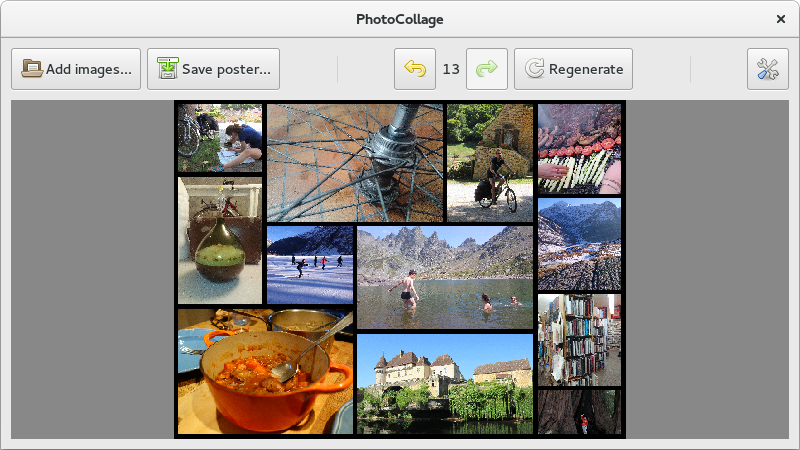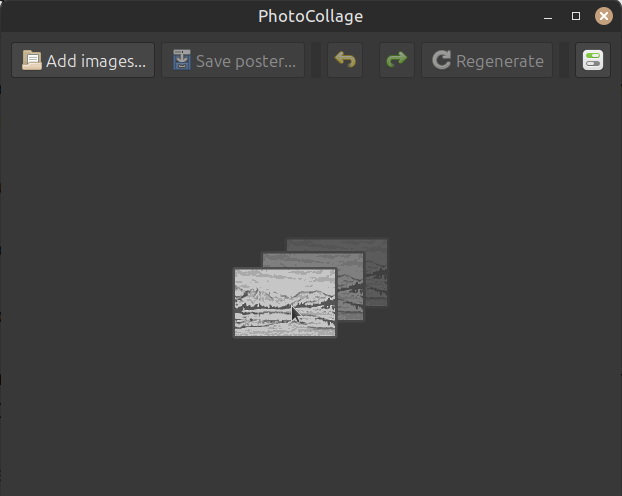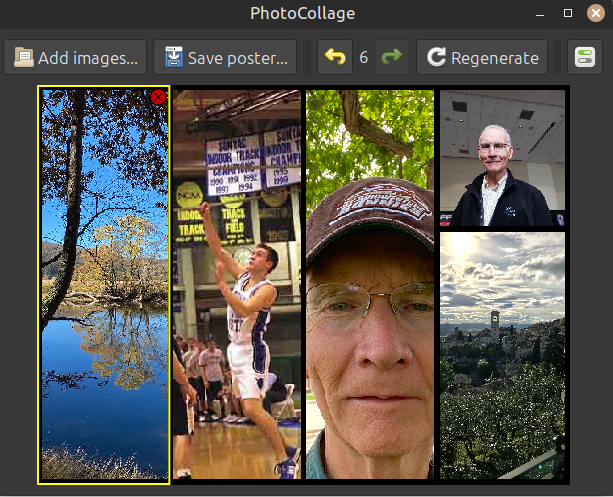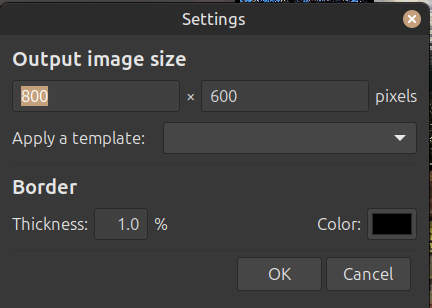
Creating photo collages with Linux
Open source software is amazing and it seems like there are always solutions that come in handy when I look hard enough. Today was one of those days when an internet search for a query I read on Mastodon netted another open source solution. Mastodon user, Bryan Mitchell asked “Are there any photo editing software programs out there where you can put a set of photos into a collage?” Bryan had used Google’s Picasa formerly but that is no longer available. A quick search revealed an open source project called Photocollage. It is an easy to use software package written in Python with a GPL 2.0 license. It was easy for me to find the correct install script for Linux Mint.
$ sudo apt install photocollageYou can also install Photocollage on RPM based distributions by using the following command:
$ sudo dnf install photocollageYou can elect to install it with Python by using the following command.
sudo pip3 install photocollageIt can be launched from the command line or in my case from the “Graphics” submenu of my Cinnamon desktop. Click on the ‘Add images..’ button and start adding pictures to your collage.

In short order I added a number of pictures from a directory on my computer. There is a button to ‘Save poster’, two buttons in the middle of the panel to ‘go back’ or ‘go forward” and one more at the end to ‘Regenerate’ the collage.’

The last button on the panel is for ‘Settings’ to allow you to choose different picture sizes and templates. You can select border thickness and background color.

This software is easy to use and the results a very good. Images can be saved in ten different formats including: bit map paint, jpeg, gif, Microsoft Paint, pcx, png, tga, tiff, WebP and xbm. The software integrates with GNOME and is available in English, French, German, Czech, Italian, Bulgarian, Dutch, Russian, Spanish, Polish and Ukrainian. Lead developer is Adrien Verge and there are over twenty other contributors.